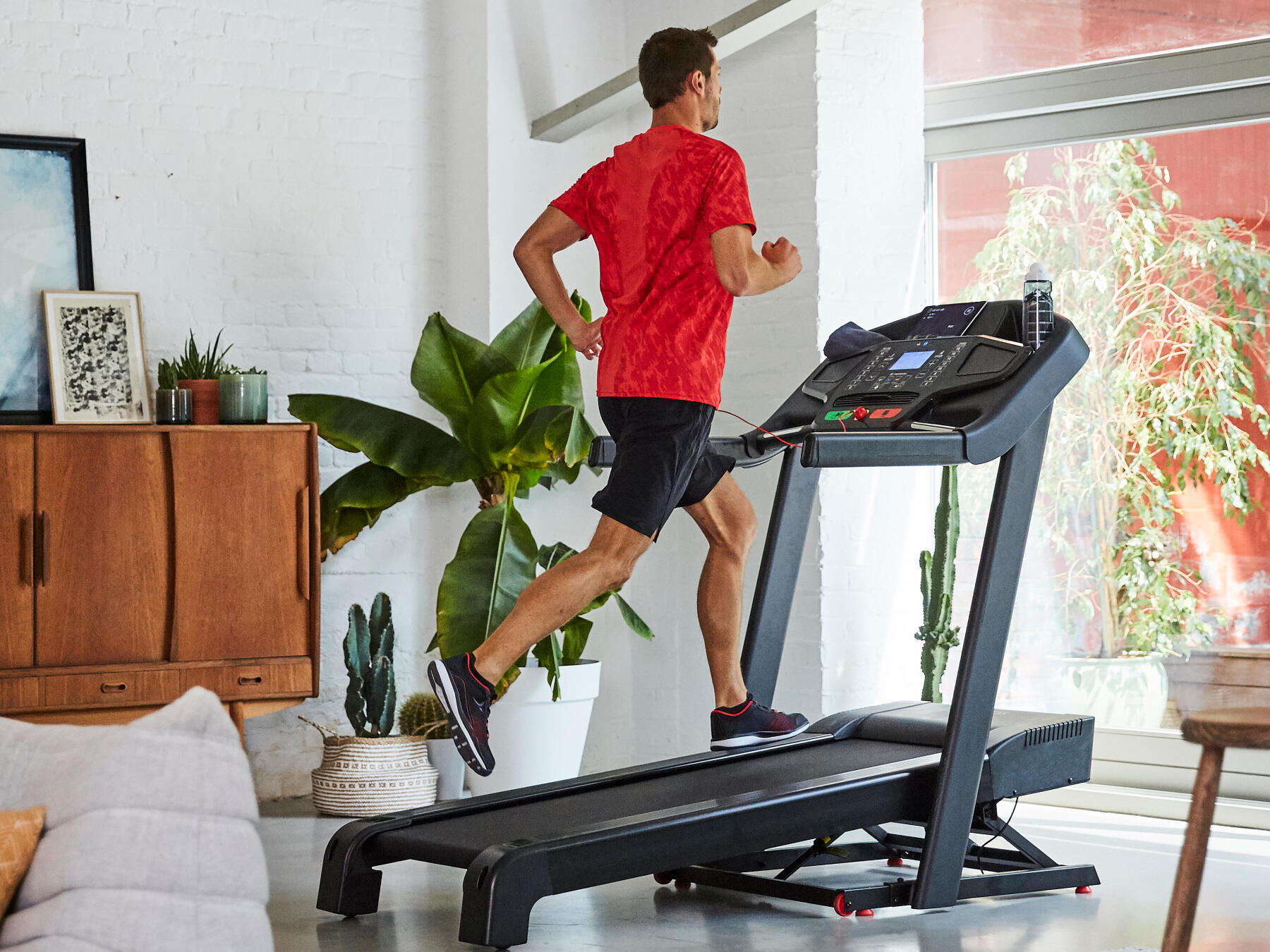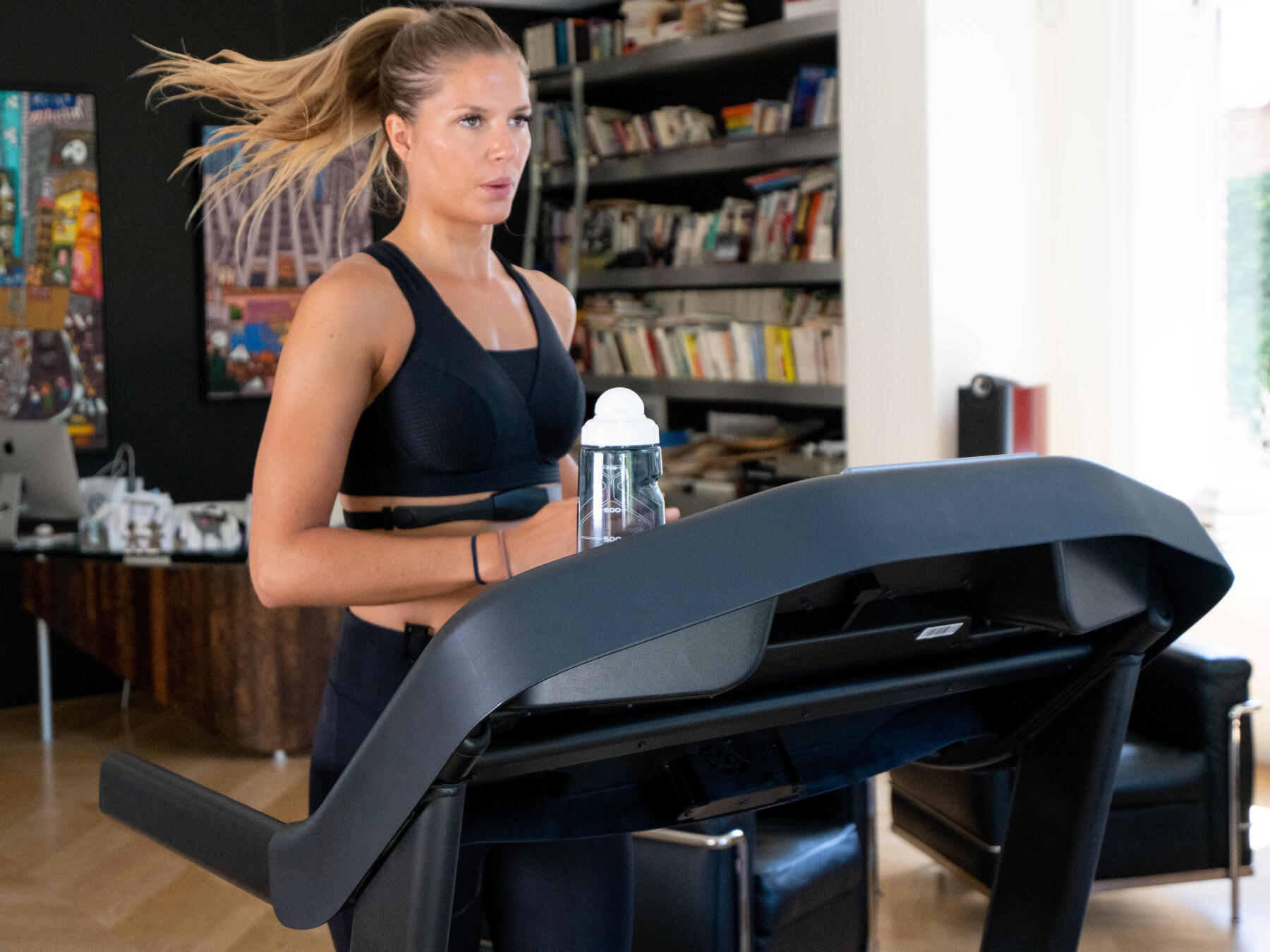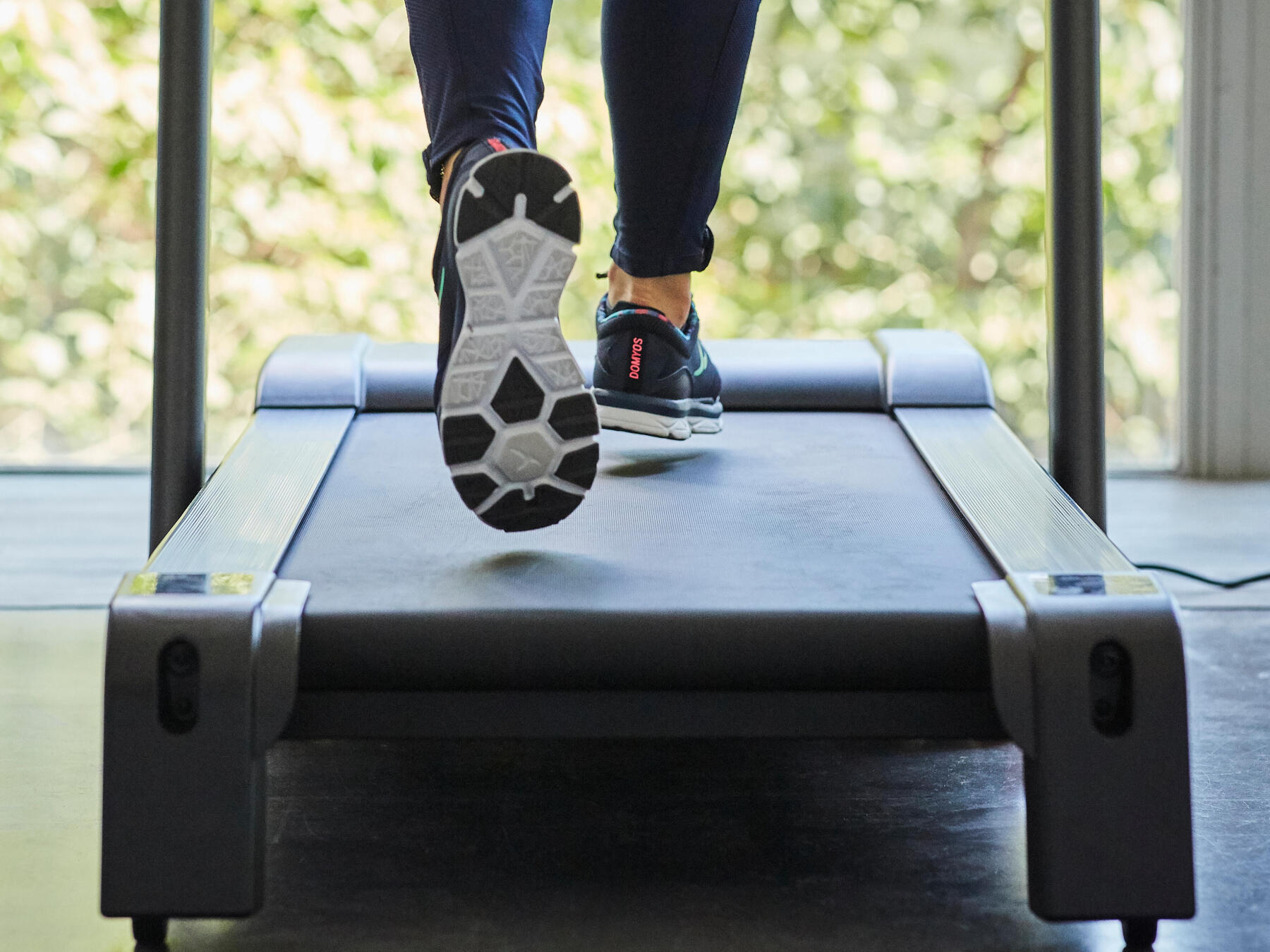When you run on a treadmill, your stride isn't as natural as when you run outdoors. This is because the treadmill dictates your stride: the cushioning is even, the pace is constant, and your foot's contact with the ground is slightly different. This leads to you taking smaller strides than you would when running outdoors.
Something else to watch out for is that the pace can seem faster on a treadmill than it really is.
To find the right pace and position, spend 10 minutes warming up at the start of each workout (by setting the treadmill to about 2-3 km/h, for example) and at least 20 minutes running while gradually increasing the speed and incline. If you want to have the same level of intensity as an outdoor workout, try to take the same size strides and listen to your body to dictate your pace.
In terms of breathing, don't forget to breathe in and out properly. It's important to breathe comfortably throughout your workout. In other words, you shouldn't feel completely out of breath.




